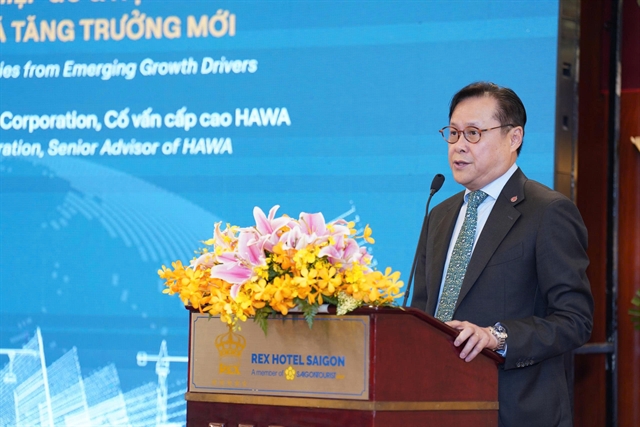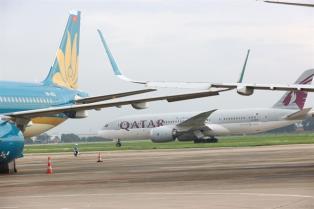HCM City is poised to become one of the world’s leading hubs for wood and furniture production and export as the global market enters a recovery cycle and demand for green, sustainable products continues to rise, speakers said at a seminar in the city on October 23.

HCM CITY — HCM City is poised to become one of the world’s leading hubs for wood and furniture production and export as the global market enters a recovery cycle and demand for green, sustainable products continues to rise, speakers said at a seminar in the city on October 23.
The event, titled “HCM City’s Wood and Furniture Export Industry – A Global Manufacturing and Export Hub,” was jointly organised by the Handicraft and Wood Industry Association of HCM City (HAWA), the Vietnam Timber and Forest Product Association (Viforest), and the Bình Dương Furniture Association (BIFA).
Speaking at the event, Phùng Quốc Mẫn, chairman of HAWA, said Việt Nam’s wood industry has achieved remarkable progress over the past two decades, growing from less than US$200 million in export value in 1999 to an expected $20 billion by 2025. Việt Nam is now the world’s second-largest exporter of wooden furniture, just behind China.
“The industry has built a relatively complete supply chain, from raw materials and production to distribution, creating a strong global competitive advantage,” he said.
Following the recent administrative merger, HCM City now accounts for nearly half of the country’s total wood export revenue and has developed an integrated supply chain covering production, processing, logistics, and seaports.This forms a solid foundation for the city to position itself as a regional manufacturing hub, Mẫn added.
HAWA and BIFA are merging, expanding HAWA’s membership to nearly 1,000 enterprises, about 70 per cent of which are producers and exporters. The new HAWA will work closely with both government and industry to ensure stable production, sustainable growth, and global market expansion, aiming to make HCM City a hub of the world’s wood and furniture industry.

Nguyễn Quốc Khanh, chairman of AA Corporation and senior advisor to HAWA, said: "The industry’s goal is not merely to export, but to export profitably and sustainably."
The wood industry must move beyond subcontracting and focus on developing value-added products. To achieve this, businesses need to invest in design, brand development, marketing, and sales channels to enhance value,” he noted.
He urged local firms to embrace a go-global strategy by building their own brands, developing a high-quality workforce, and adopting ESG-based management models.
“With the right direction, by 2035, HCM City could achieve $15 billion in export turnover, with 80 per cent of products meeting green standards and forming a smart ecosystem that integrates industrial, trade promotion, and logistics hubs across the southern key economic region,” he said.
Twin transition: green and digital
Nguyễn Liêm, vice chairman of Viforest and chairman of BIFA, emphasised that the wood industry must pursue dual transformation - green and digital.
“The green transition helps save energy, reduce emissions, and encourage the use of legal, eco-friendly materials that meet international standards. Digital transformation, meanwhile, ensures transparent management, enables production data measurement, optimises supply chains, and improves demand forecasting. The two processes are closely linked and go hand in hand,” he said.
He proposed establishing a Green and Digital Transformation Support Centre for the wood sector in HCM City, piloting low-emission factories and green industrial clusters with shared infrastructure to help small businesses ‘go green’ at affordable costs.
Lê Đức Nghĩa, chairman of An Cường Wood Working JSC, said the company has implemented SAP S/4HANA, a comprehensive digital management platform, which integrates production, finance, and supply chain data, boosting productivity by over 20 per cent.
When digital transformation goes hand in hand with green transition, companies not only save costs but also meet international standards for transparency, governance, and ESG, all essential for expanding into global markets, he explained.
He also recommended that the government prioritise digitalising the national wood industry database, build an open data system, expand access to green finance and energy-efficient technologies, and develop training programmes to help enterprises comply with international standards such as EUDR, CBAM, FSC, and PEFC.
Vũ Quang Huy, chairman of Tekcom, said the industry is facing trade barriers such as countervailing duty investigations, traceability requirements, and environmental certifications. But these challenges present an opportunity for businesses with strong capacity and high compliance standards.
He suggested that HCM City should take a more proactive role in standardising digital traceability records, establishing a dedicated centre for HS codes and rules of origin, and developing an early-warning system to prevent trade fraud.
Thomas Luk, director of Starwood Furniture Mfg VN Corp, said many Vietnamese exporters face high US tariffs, but there are ways to mitigate them.
“One such measure is called “first sale”. By changing the price of goods declared to the US customs from what the importer in US is selling to the retailers to the ex-works price of the manufacturer, there will be huge savings in terms of tarif,” he said.
He also called for policies to support the renovation of ageing factories and minimise account receivable risk.
Enterprises at the event further proposed streamlining administrative procedures and developing a large-scale trade fair and exhibition centre in HCM City to strengthen international trade promotion.
In his closing remarks, HCM City People’s Committee Chairman Nguyễn Văn Được praised the achievements of Việt Nam’s wood and furniture industry, noting that enterprises are the driving force of economic development.
The city government is committed to listening to and acting on business feedback. It will turn these ideas into practical and feasible policies to create a competitive, transparent, and sustainable business environment, he said.
He added that the city would review tax refund procedures, address overlapping regulations affecting both domestic and foreign enterprises, and continue investing in road and rail infrastructure to reduce logistics costs.
“With its tradition of dynamism, creativity, and pioneering spirit, I believe HCM City’s wood and furniture business community will continue to lead the way in realising the vision of making the city a regional manufacturing and export hub,” he affirmed. — VNS





